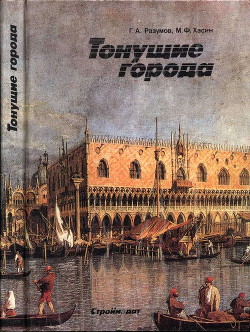Тонущие города - Разумов Геннадий Александрович

Помощь проекту
Тонущие города читать книгу онлайн
Почему же такому, казалось бы, прекрасному проекту «дали отставку»? Прежде всего обеспокоились муниципалитеты целого ряда портовых городов. Венеция, Генуя, Марсель, Пирей, Алжир и многие другие оказались бы вдали от морских берегов. А их, конечно, не устраивает перспектива повторить судьбу Эфеса и Остии. Но даже не это главное. Основное возражение заключается в том, что наука еще не в состоянии оценить последствия столь радикального вмешательства в природную обстановку. Ученым ясно, что значительное сокращение площади испарения должно отразиться на климате Европы и Африки. Но в каком направлении пойдут эти изменения — неизвестно. Не исключено, что освобожденная от воды суша станет пустыней. Неясно также, какие геологические последствия ожидают этот сейсмически неустойчивый район, если он освободится от значительного давления морских вод (ведь их вес равен весу Финско-Скандинавского ледника в эпоху великого оледенения). И все же придет время, когда проект Зергеля снова станет на повестку дня и примет более реальные черты.
Возможно, с реализацией этого или подобного ему проекта придется далее поспешить, но с иной целью: не осушение Средиземного моря, а сохранение нынешнего его уровня. Потому что прогнозы на не столь отдаленное будущее малоутешительны. После нескольких тысячелетий относительной стабильности уровень моря может начать быстрый подъем уже в следующем веке, к такому выводу пришли ученые на международной конференции в г.Сплит (1988 г.). Причина — таяние ледников и повышение уровня мирового океана в результате глобального потепления климата. Близкое будущее прогнозируется в два этапа. На первом этапе (до 2025 г.) повышение уровня моря предполагается на 13–55 см, а на втором (до конца следующего столетия) — до 2 м! Это будет сопровождаться увеличением количества сильных штормов, может повлечь серьезные последствия для побережий и стоящих на них городов. После 2025 г. прогнозируются существенные изменения в дельте р. По на севере Италии с угрозой разрушения прибрежных городов; придется вновь заниматься защитой Венеции. Может оказаться затопленной Александрия в дельте Нила. Территория этого города с населением 3,5 млн. человек большей частью расположена не выше 1 м над современным уровнем моря.
Глобальное повышение уровня мирового океана, если этот прогноз начнет сбываться, потребует от человечества соединенных действий во многих регионах планеты.
Таким образом, человечество от местных и частных задач освоения окружающей его среды сегодня переходит к региональным и даже глобальным многоцелевым проблемам преобразования своей планеты. Без этого дальнейшее развитие индустриальной цивилизации в скором времени станет невозможным. С каждым десятилетием эти неизбежные преобразования будут вестись все осмотрительнее и осторожнее, потому что цель их не только освоение планеты Земля, но и ее сохранение.
The whole history of a mankind, its present and future events are connected with the struggle against the water disasters. There where and still are some defeats in this struggle together with the victories. The former includes the submerged towns and victims of floods. The latter are towns and even countries protected from the floods as well as the land conquered from the sea.
Among the numerous sensations of the XX-th century, one of the most important discoveries relates to the submerged remains of the ancient towns and settlements on the bottom of lakes and seas. The geographical range of those discoveries is very wide. These are coasts of the Adriatic, Black, Caspian, Caribian and other seas; mouths of the Danube, Dnieper, Volga rivers; lakes of Issik-Cul, Sevan, Lbch-Ness, Titikakaetc.
Numerous legends, myths and fairy tales tell us about submerged fortresses, castles, towns and even the whole countries. The short novels of Plathony about Atlantid, Biblical myth about the world deluge, old Russian tales about the Town of Kitezh and the travel of russian merchant from Novgorod — Sadko are probably the sort of reflection showing the actual events which took place at the ancient times. IJM. Gubkin, academician wrote in his book on the Caspian and South-East Caucasus areas: «The legends on submerged towns and villages are not the legends but a true past».
For hundred of years some of the antique towns located on the Black sea coast were regarded as the mythical ones. At different times people used to tell stories about them. For example, it was known nothing about disappearance of the big ancient greek town-port of Dioskurius, which according to the myth was founded by argonavts who had went to Kolchida with Jazon to find the gold fleece. Nobody knew what kind of the ruins were seen by the soldies of Catherine the second at the beginning of 80th in XVIII c, when the russian troops defeated the Turks and entered the west coast of the Crimea. They thought it was the famous ancient Roman fortress of Sebastopol, but not the ancient greek town of Khersones as it really was. The empress who liked to name her new military ports with the classic fashionable.titles, settled Sevastopol at a distance of 600 km from the real place (Sukhumi), and transfered Kherson to the mouth of Dnieper.
The legends were not the only ones telling our descendants about the towns which disappeared in the North and East Coasts of the Black Sea. Many famous.scientists and writers including Gerodoty, Strabony, Proko-py Kesariisky wrote about it. They did not meen that those towns were fabulous, but the big sea ports, military fortresses, trade centers which had been well known in the whole antique world. Here the ways were crossed connecting the wild North and East of that world with the secular West. Two great cultures of ancient Greece and Byzantine were interacted there.
The time was merciless to the ancient towns. They were defeated by Barbarians and destructed by the internal conflicts. The severe forces on nature also left their vivid traces. In particular they are blamed for disappearance of ancient towns deep in the sea.
The centuries and milleniums have passed, and the civilized world has again heard the ancient names such as Olvia, Khersones, Pantikapious, Fanagorium, Germonassia, Nimpheum. These and the other numerous antique towns and settlements begin to appear on the maps of the historians dealing with the ancient world. The end of the last century meant the whole period of the sensational discoveries regarded the submerged towns. In particular, many of them were found at the coast of the Black, Mediterranian, Adriatic, Asov and Caspian seas.
The fates of submerged towns and history of their destruction are similar to a certain extent, but the ways of their revelation and investigation are various. Some of them were carefully studied in course of archeological exavations, discussed in the serious research publications, in public press and in documentary films. The others were studied by the short-time accidental submarine expeditions or archeological exavations, and briefly discussed in the periodics. Possibly, the most unexpected finds are still in the future.
Submerged towns. They, like the traces of time reflect the multicentury history of a mankind and mark the stages of the changeable life of the seas. Recently, the important discoveries have been made in the submarine archeology. Scientists could not find out the submerged bospo-rous Akra for many decades. Now they discovered it in the Kerch strait, nearby the east coast of the Crimea. Some unexpected finds were revealed in the Karantinnaja bay, nearby Sevastopol. Another fortress wall of the ancient Khersones was discovered there. Pontida, considered to be a mythical country once existed on the part of the Black Sea’s bottom, now begins to take visible shape.
Why the ancient towns came down to the water? What were the reasons for it? A reader will not find out the direct answers in this book. And that is not because they are not existing, but there are too many of them. In general, the science does not accept the synonymous decisions. Doubts are its major moving force. At first it seemed to be sufficient to examine the found submerged towns, to touch them, to study the remains at the laboratories for making everything clear. However, a detailed study causes more questions and proposals regarded the reasons of their destructions.
























